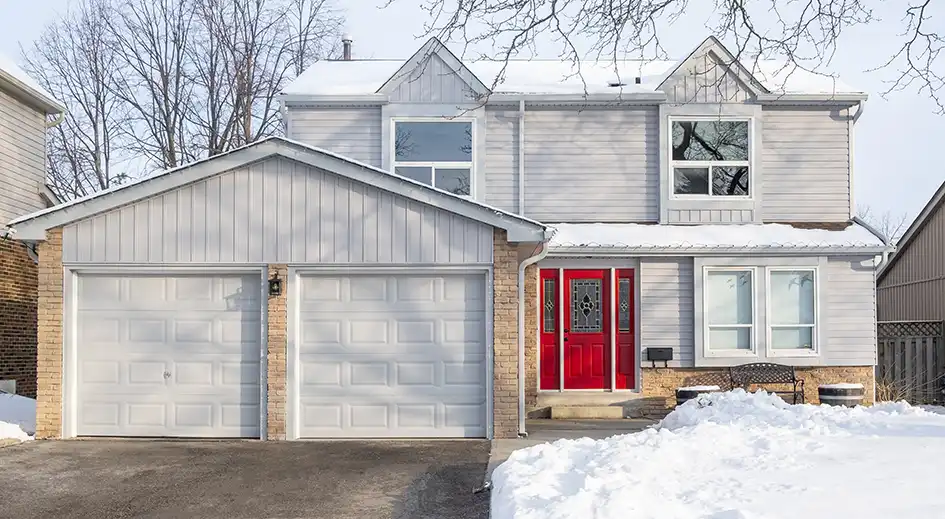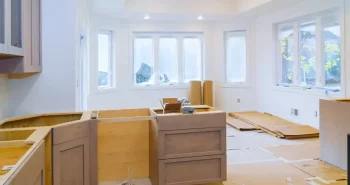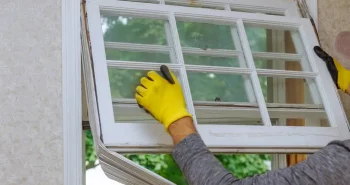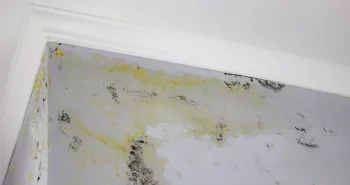Throughout the year, caring for your home’s exterior is one of the best things you can do to maximize indoor comfort and extend the longevity of your property. You likely have an ever-growing to-do list during the warmer months, but what happens once the cold sets in? Should you simply wait until spring to continue with your roofing and siding maintenance? Not necessarily. Although your list of actionable items will be much different, it’s still important to care for your home’s siding during winter months. Siding is strong and built to protect you from the outside elements, but signs of weakness or damage can spread if not addressed. To help you get the most out of your home while enjoying stable indoor temperatures, here’s how to care for your home’s siding during winter months.
Different Types of Siding Options
There are several different types of siding that homeowners use. The most common material is vinyl. This is affordable, durable, and tends to require a very low amount of maintenance when compared to other options. Wood siding is also popular, as it offers a unique appearance that breathes authenticity. However, wood tends to require more maintenance and carries a higher price tag than vinyl. Metal siding has also grown in popularity, as it’s one of the most durable options that you can choose. Finally, some homeowners opt for fiber cement siding. Although it is more susceptible to water damage, it’s very affordable and can last when properly cared for.
Be Proactive About Care in the Warmer Months
Properly maintaining your home’s siding is a year-long requirement. You should be checking for signs of damage, keeping the siding clean, and painting/sealing it regularly. In doing so, you’ll take a proactive approach to siding care, which can help reduce your risk of needing repairs or replacements during the winter months. During spring and summer months, be mindful of branches and overhanging trees and schedule a professional inspection at least once a year or following a bad storm.
Utilize Material-Specific Care During Winter Months and Beyond
The way you care for your siding during the winter will depend on the material it’s made from. There are different requirements for each type of siding, so make sure that you act accordingly.
Caring for Vinyl Siding in the Winter
If your home has vinyl siding, your maintenance needs will be quite low. As long as you’ve been proactive throughout the year, there’s not much that you’ll need to do to make sure that it stays strong and effective through the winter months. However, there are still a few things that you can do to improve longevity and durability. Consider rinsing your siding either before winter, or on a warmer day. This can help remove any dirt or grime buildup that’s often accompanied by winter storms. You don’t need to do a thorough wash during the winter, but keeping it clean can help you streamline your spring maintenance. You may also want to cover your vinyl siding, especially if you’re doing other projects that could damage it.
There are also a few things that you should absolutely avoid doing with vinyl siding over the winter. One of these is installing vinyl siding when the temperature is below freezing. Vinyl can slightly warp during extreme temperatures, so if it’s installed during winter it may end up expanding during summer. This can create negative aesthetics while simultaneously decreasing its efficiency. If you absolutely have to install vinyl during the winter, make sure it’s a mild day.
Caring for Wood Siding in the Winter
Caring for wood siding during the winter requires a little more attention. Wood siding carries one of the highest maintenance needs, as it’s porous and susceptible to water damage. During the winter, this can lead to rot or water damage if you live in an area that’s susceptible to high levels of snow or ice. After a storm, take the time to go outside and consider removing any buildup of snow from your siding. Avoid spraying with water, as this can just exasperate the issue. Instead, use broom or tool to knock the snow or ice off.
You should also regularly check your exterior for signs of water damage during the winter to avoid further complications from affecting your home. If you notice any signs of damage or rotting, call a siding professional to schedule an inspection. There are options for dealing with small patches of wood that has severe damage during the winter and it’s best to address these before the problem spreads. Keep in mind that peeling or chipping paint may also be an indicator of rot.
Caring for Metal Siding in the Winter
Similar to vinyl siding, metal siding doesn’t require much maintenance during the winter. As long as it appears to be in good condition and there are no dents, gaps, or cracks, it should be fine throughout the duration of the season. That doesn’t mean you should completely ignore your metal siding, however, as winter storms can be brutal. Regularly check your siding for signs of damage and if you notice anything new, contact your siding professional.
To prepare your metal siding for winter, take the time to properly power wash it in advanced. If you didn’t get around to that this fall, don’t worry. Just schedule a professional cleaning for the spring to remove the dirt and grime build up that the winter brings.
Caring for Fiber Cement Siding in the Winter
Fiber cement is fairly weather resistant, but it can also be porous if not properly caulked and sealed. You should undergo prep work before the winter sets in to ensure that your fiber siding stays strong throughout the winter months.
One of the best ways to help keep your siding in good condition throughout cold weather is painting it regularly. With regular coats of paint, the fiber cement is protected, and the porous levels decrease. Your siding professional may also recommend a sealant to elongate these effects. However, if things are in good condition and previous colors haven’t faded, you may be able to skip this step. You should only do this during warmer months when temperatures are above 50 degrees Fahrenheit.
Another winter maintenance tip is to keep an eye on the caulking that surrounds the siding and where the fiber cement meets windows, doors, and the roof line. If there are any signs of deterioration or indications that fissures have formed, contact a siding professional to undergo the proper repairs and keep your siding in good condition. You may also be able to handle small signs of wear and tear in regard to the caulk on your own. With that being said, avoid getting on a ladder during winter months to re-caulk high areas, as doing so can be dangerous and result in harm.
Check for Damage and Schedule a Professional Inspection
Regardless of the time of year, try to keep an eye out for any signs of damage along your siding. If you see something alarming, don’t hesitate to call a siding professional like the ones at First Star Exteriors. Our team of professional contractors specialize in roofing and siding installation, repairs, and maintenance to help you get the most out of your home all year round. We’ll perform an inspection and offer guidance on the best course of action to make sure your home stays comfortable during cold winter months.
If there are any signs of damage, you can be confident that our team will offer you competitive rates with complete transparency. The professional contractors at First Star Exteriors prioritize personable partnerships and always work with our clients’ needs at the forefront of our decisions. With over 10 years of experience, First Star Exteriors is a roofing and siding company that you can trust. We offer fast turnarounds for quotes and services to make sure your needs are addressed in a timely manner. Contact us today to schedule winter siding maintenance or receive a free quote within 48 hours.





